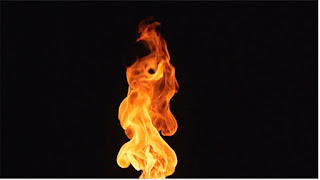Almost all the economies of the
world have given up Gold Standard ,but women and men all over the world,
especially in Asia and particularly in India continue to be in gold standard:
the driving thought is ornaments make the human body more beautiful. A naked
woman is not beautiful; nudity ornamented creates more beauty and stimulates
desire to a boiling point. Vatsayana in his Kamasutra
observes that a woman’s beauty attains aesthetic heights when she’s well
ornamented from top to toe. The names of
ornaments which are listed in Indian sahstras
amazes the world. Our deities both female and male are decorated with gold,
pearls, diamonds, emeralds - red and black rubies from crown to feet. Lord
Jagannath of Puri is the most ornamented deity in the world. Five times a year
He is decorated with ornaments of all sizes hues and verities. The Suna besha (ornamented form) of
Jagannath attracts an eager crowd of more than Ten lakhs every year,
particularly when the deities on their return from their annual yatra enter the
temple all dolled up. The Indians all over the country love ornaments. Gold is
also considered to be a saving against the rainy day. The yellow metal adds to
the prestige of a family and enhances the personality of the men and women. Gold
is the most important item in dowry. Often brides are rejected if sufficient
gold is not given in dowry. Demand for dowry is now not virulent in marriages
but parents of girls always keep gold as the most prized priority in their
voluntary dowry list. Although in the rich and educated families the yellow
metal has lost its sheen decorating the body with jewels occasionally for
bridal nights and ceremonial occassions still continues. The tattoo has
replaced carnal ornamentation but gold
and gems are proud possessions of all families. Artificial jewellery too has
come up in big way for fear of thieves but women wear the arty works keeping
their ornaments in bank vaults.
India has been the home
of gems and ornaments right from pre- vedic days. Books in Gemmology have been mostly written
in India. These books date back to 5th century BCE. In Sanskrit poetry and
drama a great deal of description of jewellery is noticed. A princess is seldom
described without ornaments. Gems, stones, pearls and diamonds were natural
crystals found in river beds. Even today gems are found on sand and gravel in
some areas of western Odisha. Ancient
India was a land of gems- gold and diamonds were plentifully available in
India. Dryden in one of his plays describes India as a land of gems. Before the
Christian Era India was a prosperous nation. Poor neighbours attacked India
only to loot this country for their survival. Persia, Afghanistan and some
European countries had regular commerce with India wherein gems played a large part.
As early as 2000 BCE Indian diamonds were used in Egypt and other countries for
making tools. Gold was always considered as auspicious in India. Men and women
wore rings in their fingers (in the least) to ward off evil influences or to
attract magically men and women. Diamond was (and is) not only the most
precious gem, it was considered to be fate changing and fortune enhancing. But
diamond is also considered evil if it does not suit a person. The history of
Indian empires is full of records how kings, princes, courtesans and common men
suffered due to the hostile rays of diamonds. The Afghans, Khorasans and Moguls
who came to India to loot her treasures were all victims of their greed for
diamonds.
The Vijayanagar Empire in the
past always prided for its gems. Almost 60% of the large diamonds came from
south India. The world famous Kohinoor
looking almost the size of a hen’s egg weighed 109.3 karats: its present weight, however,
is less than 100 karats as it has been cut for more beauty and glaze by the
British. This diamond has changed hands and places with the Mogul emperors and
aggressors is now the Jewel in the Crown of the British who refused to return
it to India. But all those who possessed this diamond had fateful events and
fatalities as recorded in history. ShahJahan, Nadir Shah up to the present day
England – impoverished and powerless as she is now- had prosperity and calamity
in mingled measures. Diamond merchants too enjoy and suffer both prosperity and
ignominy, like Nirav Modi. The story of diamonds is full of romance and
tragedy.
But India continues to value gold
and gems even today as evidenced by her huge imports. The Bullion market is
still the barometer of a country’s prosperity. The jewellery market has
given employment to a large body of artisans. Diamond cutters of India are
everywhere in the world, including China.
In the 21st century
digital economy, Ecommerce, data religion have replaced most of our old
practices of living. But gold, gems and the artistry of ornamentation have not
reduced our admiration for the stones as a bejewelled body is still considered
to be aesthetic and beautiful. Even poor women from undeveloped areas deck
themselves with plastic beads and artificial pearls. Nothing wrong if the body beautiful gets more
enthralling with metals yellow, red or black: who cares for inner beauty and by
god what is that.











